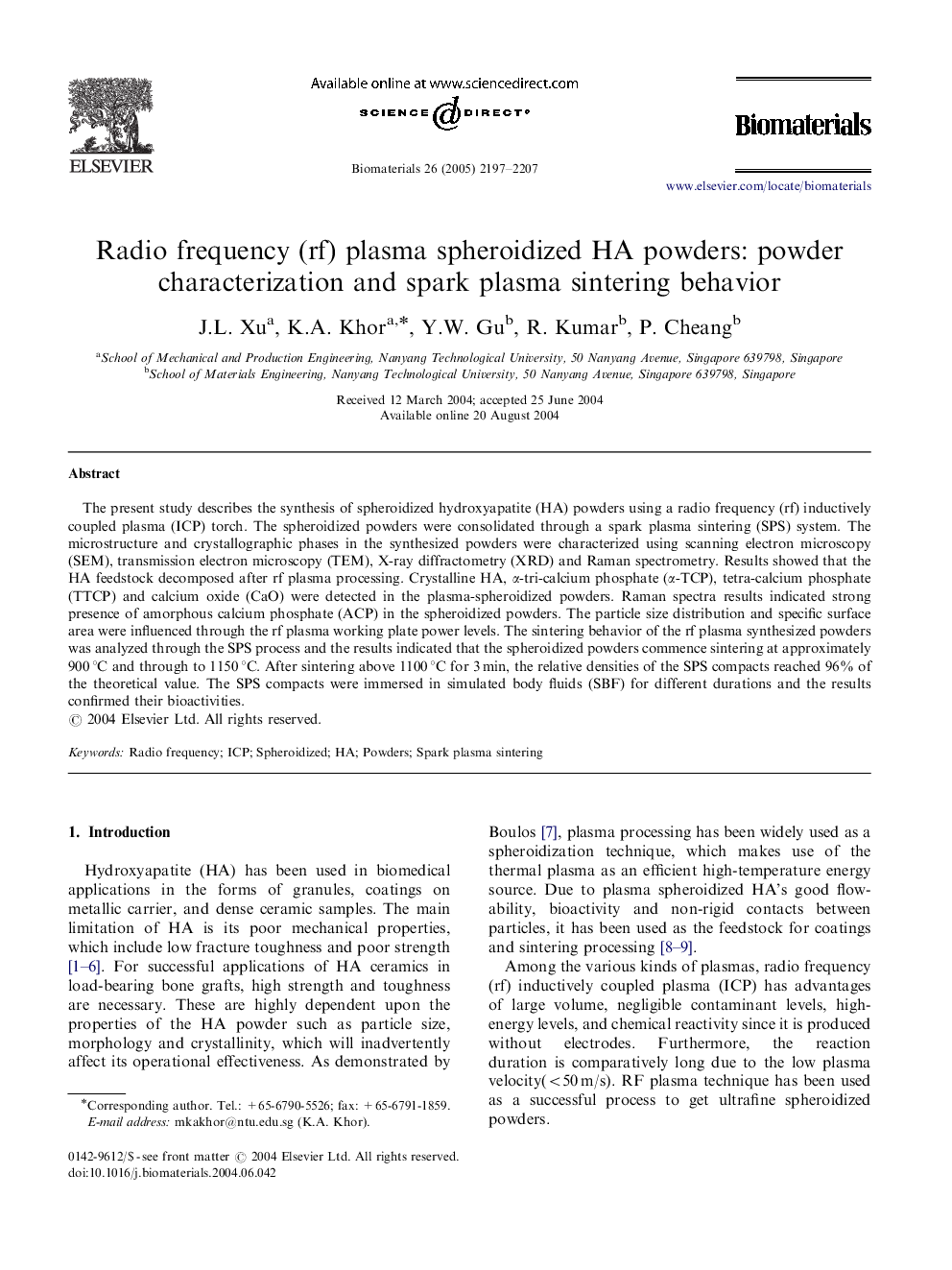| Article ID | Journal | Published Year | Pages | File Type |
|---|---|---|---|---|
| 12785 | Biomaterials | 2005 | 11 Pages |
The present study describes the synthesis of spheroidized hydroxyapatite (HA) powders using a radio frequency (rf) inductively coupled plasma (ICP) torch. The spheroidized powders were consolidated through a spark plasma sintering (SPS) system. The microstructure and crystallographic phases in the synthesized powders were characterized using scanning electron microscopy (SEM), transmission electron microscopy (TEM), X-ray diffractometry (XRD) and Raman spectrometry. Results showed that the HA feedstock decomposed after rf plasma processing. Crystalline HA, α-tri-calcium phosphate (α-TCP), tetra-calcium phosphate (TTCP) and calcium oxide (CaO) were detected in the plasma-spheroidized powders. Raman spectra results indicated strong presence of amorphous calcium phosphate (ACP) in the spheroidized powders. The particle size distribution and specific surface area were influenced through the rf plasma working plate power levels. The sintering behavior of the rf plasma synthesized powders was analyzed through the SPS process and the results indicated that the spheroidized powders commence sintering at approximately 900 °C and through to 1150 °C. After sintering above 1100 °C for 3 min, the relative densities of the SPS compacts reached 96% of the theoretical value. The SPS compacts were immersed in simulated body fluids (SBF) for different durations and the results confirmed their bioactivities.
